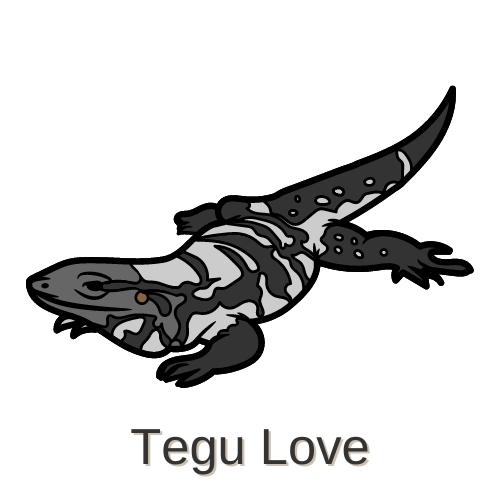Tegus are a type of lizard that originates from Central and South America. These lizards have been revered by cultures throughout history for their beauty, strength, and keen hunting skills. Today, tegus are kept as pets by people all over the world who appreciate their unique multicolored appearance and friendly personality.
Whether you’re looking to add an exotic pet to your home or simply want to learn more about these incredible creatures, read on to find out everything there is to know about tegu lizards!
Where did the tegu lizard originate from?
Originating mainly from Central and South America, the tegu lizard is a popular exotic pet prized for its intelligence, relatively low-maintenance level, and docile temperament. It has been found in places like Brazil, Peru, Paraguay, and Uruguay over the years, often thriving in wetland or tropical environments.
Scientists believe that their coloration is an adaptation to hide from predators in various areas, having natural colors and patterns blending into their local environment. There are distinct differences between each species as well, highlighting the broad range of diversity that can be found with tegu lizards all around the world.
What is the description of tegu?
The tegu is a species of large reptile native to South America. It belongs to the family of lizards known as Tegus and is one of the largest in this family, reaching lengths up to 4 feet. Their long body and four short legs are covered with hard scales that offer protection from predators. Tegus have a varied diet that includes small mammals, birds, eggs, insects, and fruits.
They also can live in forested areas or urban environments, such as parks or backyards. With their varied diets, tegus are an interesting animal for those interested in herpetology or reptile-keeping. Their inquisitive nature and vivid coloring make them captivating companions for both children and adults alike.
What are some fun facts about tegus?
The Colombian Tegu, or Tupinambis teguixin, is an interesting creature to learn about. This South American lizard, which can grow up to four feet long, is a highly intelligent species – they are known to recognize individual faces and remember them over time. They also possess what some might call ‘problem-solving’ skills; they will use tools such as rocks and sticks to open avocados or break off pieces of cactus when searching for food.
Tegus have been found to move large rocks in order to aid the construction of their burrows and have even been observed closing their burrow doors after retreating inside. Lastly, these little critters rely on aromatherapy for medical issues; by rubbing plants with strong odors on themselves, they can assist in healing wounds or ease parasites from skin irritation.
What are tegus related to?
Tegus are a group of large reptiles native to parts of Central America, South America, and the Caribbean. They belong to the family Teiidae, which includes more than 200 species of lizards. In this group are tegu lizards such as gold tegus, black and white tegus, Argentine tegus, Red running Tegus, breeding Argentine Tegus, and Colombian black and white tegus.
Due to their attractive colors and diurnal nature meaning they spend most of their days awake searching for food, these creatures have become increasingly popular in the pet trade. Most live for about 15 years if properly cared for; however, some may reach up to 20 years in captivity with careful husbandry.
How did the tegu impact human health?
Tegu lizards, found in South America and parts of the Caribbean, have had a significant influence on human health. With the protection accumulated from their thick, scaly skin, Tegus serve as reservoir hosts for a number of parasitic infections including chiggers and ticks which carry diseases such as Lyme disease and Chagas’. In addition to spreading these afflictions when they bite humans, they are also believed to be major vectors of deadly strains of salmonella.
These dangerous pathogens can have a devastating effect on the lives of those who unknowingly come into contact with the tegu. Therefore, it is essential to understand how Tegus can affect us in order to properly protect both people and wildlife.
Wrapping Up
While Tegu lizards might not be at the top of everyone’s list when it comes to pets, they still hold a fascinating place in history and culture. From the use of their eggs as currency and tegu lizards as religious symbols in Colombia to their importance in food chains around Central and South America, Tegus have been a part of many cultures for centuries. Despite being one of the more unusual animals out there, Tegus can be interesting and rewarding pets – some owners even report that they take on personalities much like cats or dogs! There is much to learn about this unique species, making them an interesting addition to any pet owner’s home.














